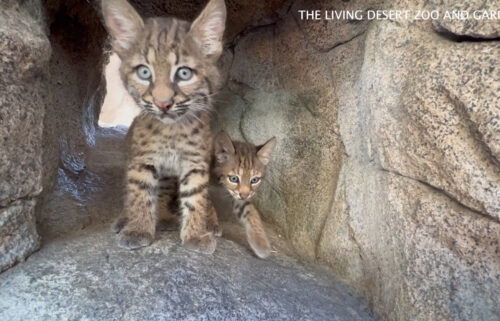Why this Colorado valley is the West’s next must-visit destination
By Will McGough, CNN
Colorado’s iconic destinations have seemingly been around forever, and we know their names by heart: Vail, Aspen and Breckenridge, to name a few, along with Denver, a city that has exploded in the past decade.
For something new, a traveler must go farther west in the state, where a budding yet still relatively unknown region called the Grand Valley has become Colorado’s next must-visit destination.
Located on the Western Slope of the Rocky Mountains, four hours west of Denver (which is on the eastern side, or Front Range, of the Rockies), the valley contains three distinct cities: Palisade, Grand Junction and Fruita.
These three destinations individually and collectively offer much to experience, including a laid-back fruit and wine region, river activities and access to a unique combination of mountain and desert terrain for hiking, biking and scenic drives.
Come along as we break down and explore this up-and-coming area of Colorado.
Palisade: Fruit, wine and agritourism
A horse-drawn carriage goes clippity-clop down Palisade’s rose-lined streets, past farm stands and wine tasting rooms bursting with color. The landscape is dominated by peach orchards, vineyards and, depending on which way you look, a memorable combination of mountain peaks and desert canyon cliffs.
James Sanders, a long-time peach farmer, waves to neighbors sitting on their front porch as he drives his yellow and blue forklift piled high with local fruit from his nearby fields to his farm market, the Palisade Peach Shack, located right at the entrance to town.
Moments later, he appears again, this time on a tractor, towing a trailer of smiling guests to his peach orchards for a u-pick tour.
It’s just another summer day in Palisade, a fruit and grape growing community of not quite 3,000 people, where visitors come to escape city life and indulge in the local food, fields and wine.
“There’s something about this place,” Sanders said. “Putting your feet up on a porch, getting into a glass of wine, having sticky hands after eating a peach, knowing that all the farmers and locals are really nice people and easy to talk to. … That’s the life we’re living here.”
Palisade’s acclaim began in the late 1800s when its early farmers planted the area’s first peach trees. Nowadays, the Palisade Peach is arguably Colorado’s most famous crop, featured and immortalized in nationally available products such as Breckenridge Brewery’s Palisade Peach Wheat beer.
Apples, apricots, plums, lavender and a myriad of vegetables also now grow in abundance. This year, Palisade’s Sunday farmer’s market took home a third-place finish in USA Today’s 2022 Best Farmers Market Readers’ Choice list, even though it was the smallest market nominated.
Motorists and bikers alike can explore Palisade’s bounty via the Fruit & Wine Byway, which winds its way through the town’s orchards and vineyards.
Summer is prime season for produce, with peaches coming in July, August and September. Stop by the Peach Shack, Talbott Farms, Clark Family Orchards or McLean Farms for peaches, and Field to Fork or Blaine’s Farm Store for other types of locally grown produce.
The harvest can also be enjoyed in Palisade’s restaurants, incorporated into the refined dishes at Pêche, the weekend burger night at Maison La Belle Vie, the cocktails at Fidel’s, the fresh-made bread and sandwiches at Slice O Life Bakery, and the sweet treats at Palisade Pies.
Colorado’s wine country is ‘the new Sonoma’
Last year, Food & Wine magazine anointed Colorado’s Western Slope as “the new Sonoma,” with Palisade’s aforementioned orchards and nearly 30 wineries sitting at the heart of the comparison.
As you might imagine, it created quite a buzz amongst local residents, who have watched the region transition from a collection of “pioneer hobby growers” to a new wave of winemaking professionals.
“Twenty or thirty years ago, when they started making wine here in Palisade, it was farmers who were growing fruit and maybe had a small plot of grapes,” said Joe Flynn, a winemaker at Plum Creek Winery who is launching his own brand, Periphery Cellars, this fall. “They were more hobby growers, but they put Palisade on the map as being a small wine-growing region, albeit without much fanfare.”
“But as Palisade has evolved, we have been taken more seriously,” Flynn said. “More people have come in and realized that the wine here is on par — if not better — than the wine grown west of us, and that Palisade offers a really unique terrain and growing region that is enticing people from out of state to come in, pick up where the pioneers left off, refine what they created for us and be a part of this up-and-coming scene.”
Hop on board with Pali Tours for an open-air, “safari-style” wine tasting tour, cruise between wineries with the always-on-call Palisade Pedicab (also nice as a scenic taxi service for happy hour/dinner from your accommodation) or rent a bike from Rapid Creek Cycles in downtown Palisade to explore at your own pace using the Fruit & Wine Byway map.
Must stops include Restoration Vineyards, Sauvage Spectrum, Colterris and Carlson Vineyards, among many others.
Grand Junction and Fruita
About 20 minutes southwest of Palisade is Grand Junction, the largest city in the Grand Valley.
Understanding the name Grand Junction requires some historical perspective. Much to the delight of rafters and river rats, the Gunnison River flows into the famed Colorado River in this valley.
At the time the area was founded, the Colorado River went by a different name: the Grand River. (It was officially changed to the Colorado River in 1921). Hence the names, Grand Junction — the confluence of the Grand and Gunnison rivers — and the Grand Valley.
You can see the merging of the rivers on a bike via the Riverfront Trail. Hop on at Las Colonias Park and cruise downstream, ending at Connected Lakes. Want a closer look? Jump on the river by renting a paddleboard or raft from Grand Junction Adventures at Las Colonias Park.
After, visit Main Street and the surrounding downtown area to browse an abundance of locally owned shops, including large antique collectors (A Robin’s Nest); outdoor-oriented thrift shops (Gear Junction); breweries (Ramblevine); and eateries (The Hog and the Hen for charcuterie and fresh market sandwiches, Bin 707 for seasonal Colorado cuisine and Devil’s Kitchen for steaks and rooftop views, to name a few).
If you’re looking to dress the part, stop by Grand Junction Western Wear or Boot Barn for cowboy hats, boots, and attire.
At night, see what’s happening at the area’s music venues, such as Mesa Theater, the Avalon Theater or Las Colonias Amphitheater. The latter is located right on the Colorado River and often draws big national acts (including Snoop Dogg and 311 this year).
At the far western end of the valley, just 19 miles (30.5 kilometers) from the Utah border, you’ll find Fruita, a small city with a big reputation for its world-class mountain biking, including the Zippity Loop in the North Fruita Desert. Hikers should head to the Devil’s Canyon Trail system to wander its cliffs, canyons and streams.
Families will love the Dinosaur Journey in Fruita, home to more than 15,000 fossil specimens, interactive exhibits and a paleontology lab. The museum also offers half and full-day outings with a professional paleontologist, where kids get to dig for bones in a working quarry. You can find other dinosaur sites nearby, such as the Dinosaur Diamond Scenic Byway and the family-friendly Dinosaur Hill hike.
Where the mountains meet the desert
In addition to the meeting of the rivers, the “grand junction” moniker also signifies another natural merger, one that is very good news for outdoor enthusiasts who want to explore a variety of terrain.
Located on the northeast corner of the Colorado Plateau, the Grand Valley is where the Rocky Mountains converge with the Southwest’s desert canyons, supplying the adventurer easy access to drastically different landscapes via hiking, biking and scenic drives. An outdoor enthusiast can be in a red-rock canyon in the morning, a pine forest trail after lunch and on the river to end the afternoon.
Split between Grand Junction and Fruita is the Colorado National Monument, its high desert landscape littered with red rock canyons, tall buttes and juniper trees.
Start your journey at the east gate in Grand Junction and take Rim Rock Drive west, stopping along the way at trails and overlooks such as Devil’s Kitchen, Ute Canyon and the Independence Monument viewpoint.
You’ll get expansive views of the Grand Valley as you exit the west gate in Fruita. Then, do as the locals and top off with beers and the Grand Valley’s best pizza at Hot Tomato in downtown Fruita.
For a drastic scenery change, head toward Grand Mesa National Forest via Interstate 70. The entrance, located along the Grand Mesa Scenic Byway, is an hour’s drive from Fruita (and even closer from Grand Junction and Palisade).
This high-alpine mountain recreation area, east of the Grand Valley, is home to dense pine forests, aspen groves and more than 300 lakes. It’s considered to be the largest flattop mountain in the world and boasts myriad campgrounds, cabins and hiking and biking trails.
For the iconic Grand Mesa experience, tackle the Crag Crest Trail and enjoy its panoramic views; to see a string of backcountry lakes, hit the short but sweet Land O’ Lakes trail; and spend the night in a mountain cabin at Alexander Lake Lodge or Mesa Lakes Lodge, where you can rent canoes, kayaks or fishing gear.
On those longer summer days, cool off on the Colorado River and float your way through Palisade, Grand Junction or Fruita with a rafting, tubing or paddleboarding trip from Paddleboard Adventure Company or Centennial Canoe. End your day with a drink at the The Sneak Line in Palisade to swap stories with other river-goers.
Where to stay and getting there
Main Street in Grand Junction offers a selection of chain hotels for point collectors (including two Marriott properties), and similar, familiar lodging can also be found in Fruita.
But if you’re looking for local accommodations with personality, Palisade is the place.
For wine country bed and breakfast vibes, stay with Dave and Michelle at the historic, antique-filled Wine Valley Inn (adults only), or enjoy a resort experience at the Wine Country Inn just up the road.
The choice for bikers and outdoor adventurers is easy: The Spoke & Vine Motel, where locals gather for drinks every Monday. Want to camp? Grab a tent site or cabin at Palisade Basecamp, located right alongside the Colorado River.
To access the region, you’ll fly into the Grand Junction Airport (GJT), crowned the Colorado Airport of the Year in 2021.
Despite its location in remote western Colorado, most people in America can arrive in the Grand Valley with only one connection. There are direct flights from major hubs such as Denver, Dallas, Salt Lake City, Las Vegas and Phoenix.
The-CNN-Wire
™ & © 2022 Cable News Network, Inc., a WarnerMedia Company. All rights reserved.



